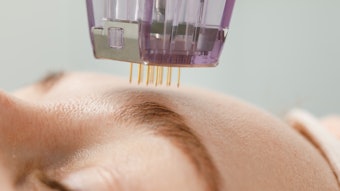
A series of new skin care market projections suggest that some segments of the industry will experience less growth in short periods and more growth modestly over long periods. Despite settling markets, consumer interest in skin care is evergrowing and beginning to incorporate cosmetic procedures and integrated routines.
Related: Top Sun Care Trends in 2024
Market Projections
After a sustained period of growth, sales of facial skin care products are forecasted to remain steady over the coming years. A more modest growth is expected long-term and Mintel projects the U.S. facial care market will surpass $13 billion in 2028.
Mintel recommends brands embrace longevity in skin health, the growing acceptance of cosmetic surgery, the benefits of clinical treatments and the mind-body connection to stand out in a competitive market
The average consumer has added a step to the routine since last year, making small regimens less common and more robust regimens the standard. As consumers continue to become more involved with their facial skin care, the category continues to show signs of growth and dynamism, per the report.
A recent report by Kline+ Company revealed that the medical dispensing skin care market has been growing at a 15% CAGR since 2020, with North America remaining the largest and fastest-growing market, followed by Latin America. Sell-in sales of professional skin care products in the U.S. are projected to reach nearly $2.5 billion this year.
Kline's report suggests the rise of integrated skin care solutions contributes to the market’s dynamics. Skin care professionals now have access to a wide array of tools for more comprehensive approaches to efficiently and effectively address various skin concerns.
The growing interest from younger generations has spurred the demand for cost-effective treatment alternatives, driving advancements in clinic technologies. Kline noted the increased interest in laser treatments, especially those addressing multiple skin care concerns simultaneously in a single session. Across all key markets, there is a surge in demand for gentle yet effective anti-aging solutions.
Consumer Survey
A YouGov survey asked Americans about their skin care routines, the products they’re using and how much they’re willing to spend on skin care. Women are more likely than men to have a consistent skin care routine, to use a wide variety of products at least daily and to be willing to spend more on products.
Per the survey, 50% of Americans say they have a very or somewhat consistent skin care routine, including 20% who say their routine is very consistent. Women (60%) are more likely than men (39%) to say they have a consistent skin-care routine, while 18% of women and 36% of men do not have a skin-care routine at all.
The most-used skin care item is lip balm, with 35% of women and 10% of men saying they use this product multiple times per day. Cleanser is another commonly used item: 7% of men use it multiple times a day and 10% use it once a day. Among women, 19% use cleanser multiple times a day and 24% use it once a day. The survey reports that 17% of men and 46% of women use moisturizer at least once a day.
Among respondents, 25% of women and 6% of men have used retinol. Fewer have used facial rollers (18% of women and 5% of men), dermaplaning (11% of women and 2% of men), or LED light therapy (8% of women and 6% of men) as skin care treatments.
Many American consumers are willing to spend a moderate amount on skin care, with 19% saying the maximum amount they would spend on one product is between $11-$20. Women are willing to spend more than men: 9% of women say they'd spend more than $60 on a product, compared to just 2% of men.
Women are more likely than men to have a consistent skin care routine, but the report indicates that women (69%) and men (70%) are equally likely to be very or somewhat satisfied with their skin.











